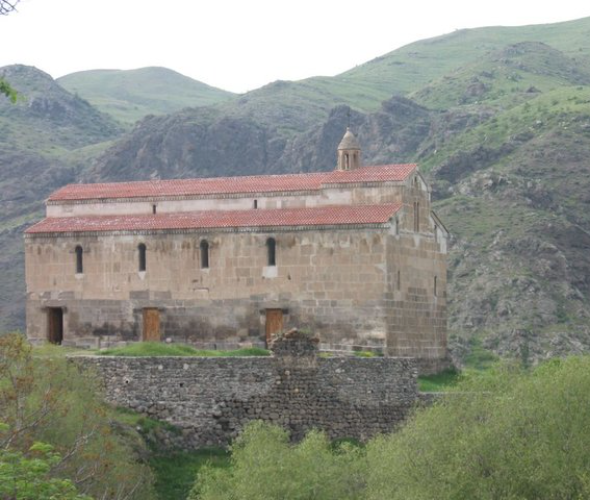Tsitsernavank Monastery
Region
Artsakh
Distance from Yerevan
339.7 km
Type
Monastery/Church
Tsitsernavank Monastery is one of Armenia’s most renowned pilgrimage churches, located on the northwestern edge of the village of the same name, on the right bank of the Aghavno River. It dates back to the 4th–6th centuries and is classified among the early Christian Armenian three-nave basilicas. The church was constructed in several stages, clearly reflecting the influences of different historical periods. According to some historical sources, a pagan temple once stood on the site, which was later converted into a church following Armenia’s adoption of Christianity. The Tsitsernavank basilica has several unique architectural features rarely seen in Armenian church design. One of the most notable is the absence of a western entrance, a characteristic more commonly found in pagan structures, and an exception among basilicas. Other striking elements include a vaulted hall above the altar, no windows in the apse, and the lack of load-bearing arches for the vaults. The monastery is known by multiple names—Tsitsernavank, Tsitsernakavank, Tsitserno, Tsitsarnu, and Matnevank. The latter, “Matnevank,” is linked to a sacred relic preserved there—the finger of the Apostle Peter. In classical Armenian, the word for pinky is “tsitsern”, and according to tradition, this gave the monastery its name. This connection is also mentioned in medieval Armenian hymns, confirming its deep spiritual and cultural significance as a sacred site.

Interesting
facts about Tsitsernavank Monastery


Facts
Weather in Artsakh
The high season in Armenia lasts for a long time due to the pleasant climate conditions. Warm days in Armenia start in March and last until late autumn; winter is usually snowless and not long. The high precipitation season is variable. The tourist season for Tsitsernavank Monastery depends on the weather conditions.






